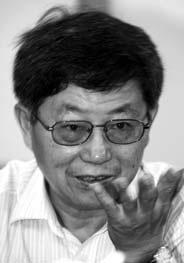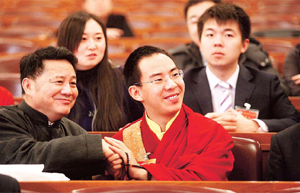No hype but solid talk on Hainan: Adviser
By wang hao and Zhao Huanxin (China Daily)
Updated: 2010-03-12 07:13
BEIJING - The country's media missed important questions while reporting on Hainan's effort to build itself into a top international tourist resort, said senior scholar Chi Fulin.
Instead of wallowing in criticism or jumping on hype about the island's skyrocketing real estate prices and tourism incentives like lotteries and duty-free shopping, the media could have grilled officials about long-term development issues and pushed for concrete measures, Chi told China Daily.
Chi, president of the Hainan-based China Institute for Reform and Development, said he has found few serious discussions in the media since the State Council unveiled guidelines to turn Hainan into a premier international tourist destination in 10 years.
He acknowledged, however, that widespread media criticism about poor service and unreasonably high hotel rates were a boon to Hainan, serving to nudge local officials into action.
Chi, a member of the National Committee of the Chinese People's Political Consultative Conference, the country's top advisory body, listed three issues in the central government's guidelines which he claimed the media have "neglected" and for which the government has yet to come up with solutions.
First, the guidelines say Hainan should become a world-class shopping center by 2010.

"This seems to be one of the ultimate goals, and building more duty-free outlets in Hainan, a pet topic of the local media, is just an intermediate step. How can Hainan fulfill this goal with its current logistics and infrastructure? How must it differentiate itself from Hong Kong, which is already a shopping haven?" Chi said.
Second, as a top international tourism island, Hainan will see its residents' income rise to join the country's leading areas by 2010.
"This is an encouragement for local residents, as it means the central government's strategy really gives them substantial benefits," Chi said.
But Hainan will be hard-pressed to reach this level given that its urban resident's annual income is about 3,000 yuan ($440) less than the country's average, he said.
For Hainan to catch up, the growth rate of residents' income will have to double, he said.
Also, Hainan's gross domestic product must grow at least 15 percent annually, up from 8.7 percent last year.
Hainan ranked 23rd in competitiveness in China last year, better only than Xinjiang, Guangxi, Tibet and other less-developed regions, according to a report by the Chinese Academy of Social Sciences.
Finally, the central government requires Hainan to implement a unified land management plan for urban and rural areas, Chi said.
"This will be an issue with great implications," he said. "For one thing, the plan will ensure there is a sufficient land supply for Hainan's development."
Chi said Hainan has just started its endeavor to become a top tourist attraction, and it still has a long way to go. Therefore, it needs to sort out major issues and challenges, and avoid short-sighted decisions like heating up the real estate market and risk a bubble that could ruin Hainan's future, he said.
Chi proposed Hainan take a bold step to reshuffle its administrative regions, by consolidating its 18 counties and cities into five major cities, one each in the east, west, north, south and central part of the island.
With the new arrangement, the rural and urban regions would have a unified plan for infrastructure construction, land use and administration as well as social projects.
This would facilitate the efficient use of otherwise scattered resources and improve residents' living standards.
Chi also suggested Hainan establish a regional commercial bank to boost the local government's confidence in building a top international tourist destination.
(China Daily 03/12/2010 page7)


